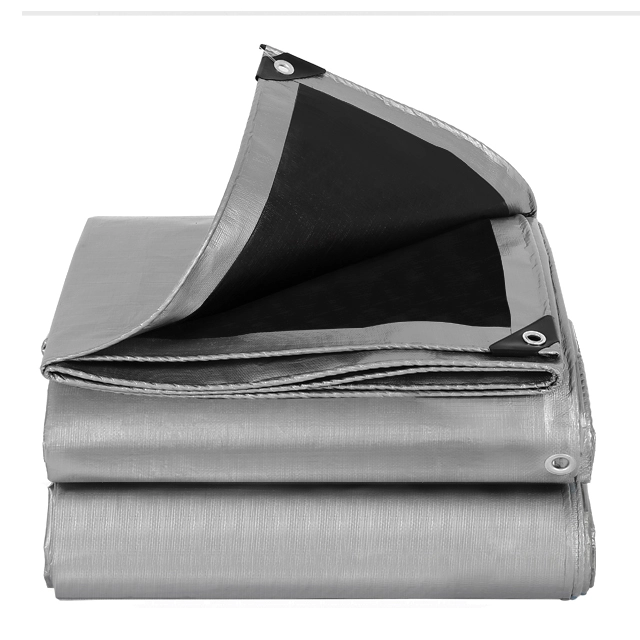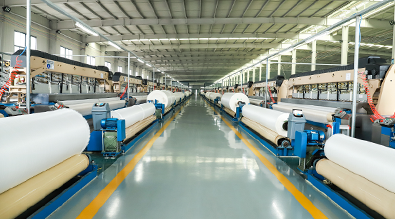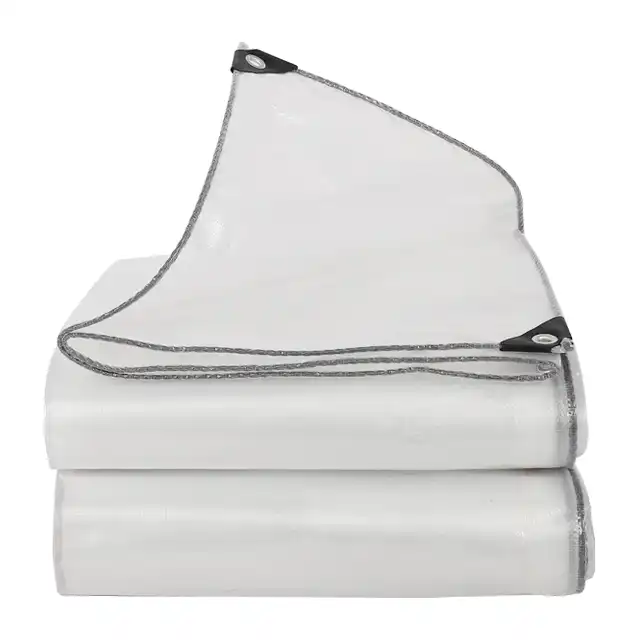The Difference Between Awnings and Tarpaulins: A Comparison
Picture this: you're standing in your backyard during an unexpected downpour, watching your expensive outdoor furniture get soaked, or worse, witnessing your construction materials deteriorate under relentless UV rays. You need protection fast, but should you invest in an awning or reach for a tarpaulin? This critical decision affects not only your budget but also the longevity of whatever you're trying to protect. Understanding the fundamental differences between awnings and tarpaulins can save you from costly mistakes and ensure you get the right protective solution for your specific needs. Both serve as essential weather protection tools, but their construction, applications, and performance characteristics differ significantly in ways that directly impact their effectiveness for various scenarios.
Understanding Tarpaulins: Versatile Protective Solutions

Tarpaulins represent one of the most adaptable protective covering solutions available in today's market. These large sheets of strong, flexible, water-resistant material have evolved significantly from their historical origins when sailors used tarred canvas to protect cargo from sea spray and rain. The word "tarpaulin" itself derives from two components: "tar" referring to the black coating substance used for waterproofing, and "pall" meaning fabric or covering. Modern tarpaulins have transcended their maritime roots to become indispensable across agricultural, industrial, construction, and consumer sectors. What makes tarpaulins particularly valuable is their portability and temporary nature—they can be deployed quickly, moved easily, and stored compactly when not in use. Unlike permanent structures, tarpaulins offer flexibility that allows users to adapt their protective coverage based on changing weather conditions or project requirements.
-
Material Composition and Manufacturing of Tarpaulins
Contemporary tarpaulins are manufactured from various base materials, each offering distinct performance characteristics. Polyethylene tarpaulins, commonly known as poly tarps or PE tarpaulins, dominate the market due to their exceptional combination of lightweight construction, complete waterproofing capabilities, and cost-effectiveness. These tarps are constructed from high-density polyethylene woven fabric combined with low-density polyethylene coating on both sides. The manufacturing process involves extruding yarn from polyethylene polymers, weaving these yarns into fabric using advanced water-jet looms, then applying protective coatings through specialized lamination equipment. Premium manufacturers utilize virgin polymers rather than recycled materials to ensure consistent quality and enhanced durability. The fabric typically features a mesh count ranging from 10x10 to 14x14, which refers to the number of woven strands per square inch—higher mesh counts generally indicate superior strength and tear resistance. Modern PE tarpaulins incorporate UV stabilizers, typically comprising one to seven percent of the coating composition, which provides crucial protection against harmful ultraviolet radiation that would otherwise cause premature degradation and color fading.
-
Applications and Use Cases for Tarpaulins
The versatility of tarpaulins manifests through their remarkably diverse application portfolio across multiple industries and everyday situations. In construction environments, heavy-duty tarpaulins protect building materials, cover unfinished structures, and shield equipment from rain, snow, and debris accumulation. The agricultural sector relies extensively on tarpaulins for hay pile coverage, greenhouse construction, livestock protection, and creating impermeable barriers for aquaculture operations. Transportation and logistics industries use specially designed truck tarpaulins to secure and protect cargo during transit, preventing moisture intrusion and wind damage to valuable goods. For recreational purposes, camping enthusiasts deploy tarpaulins as ground covers, emergency shelters, and supplementary rain protection for tents. Homeowners frequently utilize poly tarpaulins for pool covers, temporary roof repairs, outdoor furniture protection, and seasonal garden bed coverage. The emergency relief sector, including organizations like UNHCR, IOM, ICRC, and UNICEF, depends on durable, weather-resistant tarpaulins for creating temporary shelters in disaster zones where rapid deployment and reliable protection are absolutely critical for displaced populations.
Awnings: Permanent Architectural Protection Systems
Awnings represent a fundamentally different approach to weather protection, functioning as architectural elements rather than temporary coverings. Unlike the portable and flexible nature of tarpaulins, awnings are typically semi-permanent or permanent installations attached to building structures. These protective canopies extend outward from walls to provide shaded areas and weather protection for windows, doors, patios, and outdoor seating areas. The term "awning" likely emerged in nautical contexts during the early seventeenth century, initially referring to old sails hung to provide shade aboard ships. Today's awnings have evolved into sophisticated architectural components that blend functional protection with aesthetic enhancement. They serve multiple purposes simultaneously: reducing solar heat gain through windows, protecting building facades from weather deterioration, creating comfortable outdoor living spaces, and contributing to a building's architectural character. Modern awnings incorporate advanced engineering and materials science, featuring weather-resistant fabrics, corrosion-resistant frames, and increasingly, motorized mechanisms for convenient extension and retraction.
-
Material and Structural Characteristics of Awnings
Awning construction involves substantially more complex engineering compared to simple tarpaulin deployment. The fabric component of modern awnings typically consists of solution-dyed acrylic canvas, vinyl-coated polyester, or specialized outdoor fabrics designed specifically for permanent outdoor exposure. Premium awning fabrics like those from brands such as Sunbrella feature solution-dyeing processes where color pigments are incorporated during fiber production rather than applied afterward, resulting in exceptional colorfastness and UV resistance that maintains appearance for years. The structural framework supporting awning fabrics usually comprises aluminum, galvanized steel, or stainless steel components engineered to withstand specific wind loads and weather conditions. Retractable awnings incorporate sophisticated mechanical systems with tension arms, roller mechanisms, and increasingly, electric motors controlled by switches, remote controls, or automated sensors responding to sunlight and wind conditions. Fixed awnings require permanent mounting hardware securely anchored into building structures, demanding proper installation to ensure structural integrity and safety. The fabric tension in properly installed awnings must be carefully calibrated—too loose and the fabric will flap destructively in wind, too tight and the material experiences excessive stress leading to premature failure.
-
When Awnings Excel: Ideal Application Scenarios?
Awnings prove most valuable in situations requiring permanent or long-term weather protection combined with architectural integration and aesthetic considerations. Commercial establishments such as restaurants, cafes, and retail shops utilize awnings to create inviting outdoor spaces that extend usable square footage while protecting customers from sun and light rain. The branding potential of awnings—through color selection, graphics, and signage integration—provides marketing value that tarpaulins cannot match. Residential applications include patio coverage for outdoor living areas, window awnings that reduce cooling costs by blocking solar heat gain, and door canopies that protect entrances from weather while adding curb appeal. Awnings excel in urban environments where permanent architectural solutions are preferred over temporary coverings that might violate building codes or homeowner association regulations. Climate control represents another advantage—properly positioned awnings can reduce interior temperatures by blocking direct sunlight, potentially decreasing air conditioning costs by fifteen to twenty-five percent according to various energy studies. However, awnings generally cannot match the complete waterproofing and heavy-duty protection capabilities of industrial-grade tarpaulins, making them less suitable for applications requiring absolute weather protection or coverage of large, irregular spaces.
Awnings vs Tarpaulins: Critical Performance Differences
The fundamental distinction between awnings and tarpaulins lies in their intended permanence, structural complexity, and application focus. Tarpaulins prioritize portability, versatility, and temporary deployment, while awnings emphasize permanent installation, architectural integration, and aesthetic appeal. When comparing waterproofing capabilities, heavy-duty polyethylene tarpaulins typically provide superior complete moisture barriers suitable for protecting sensitive materials and equipment in harsh weather conditions. Quality PE tarpaulins feature laminated construction with waterproof coatings on both fabric sides, ensuring virtually zero water penetration even during prolonged exposure to driving rain. In contrast, many awning fabrics, particularly those made from solution-dyed acrylic, are water-resistant rather than completely waterproof—they shed light rain effectively but may allow moisture penetration during heavy downpours or extended wet weather. This distinction proves critical for applications where absolute dryness is essential.
-
Cost Considerations and Economic Factors
Economic analysis reveals significant differences between awnings and tarpaulins across initial investment, installation expenses, and long-term value. Industrial-grade polyethylene tarpaulins represent remarkably cost-effective protection, with middle-duty PE tarpaulins ranging from 100gsm to 180gsm available at highly competitive prices that make them accessible for budget-conscious buyers and large-scale projects requiring extensive coverage. A quality poly tarpaulin sheet suitable for construction or agricultural use typically costs a fraction of what comparable awning installation would require. Tarpaulins also eliminate installation labor costs since they can be deployed by users without specialized skills or permanent mounting hardware. However, the total cost equation changes when considering longevity and maintenance requirements. Properly maintained awnings can last ten to fifteen years or longer, whereas even heavy-duty tarpaulins typically require replacement every two to five years depending on usage intensity and environmental exposure. Awning installation involves substantial upfront investment including professional labor, structural mounting hardware, and potentially building modifications to accommodate attachment points. Motorized retractable awnings command premium prices but offer enhanced convenience and potentially longer fabric life since they can be retracted during severe weather.
-
Durability and Weather Resistance Comparison
Durability performance under various environmental stresses differentiates awnings and tarpaulins significantly. High-quality PE tarpaulins manufactured with virgin high-density polyethylene fabric and proper UV treatment demonstrate excellent resistance to ultraviolet degradation, allowing them to withstand continuous outdoor exposure for multiple seasons. The woven polyethylene construction provides inherent tear resistance and mechanical strength, though sharp objects or rough handling can compromise tarpaulin integrity. Manufacturers like Linyi Shengde Plastic Co., Ltd. produce premium tarpaulins featuring mesh counts up to 14x14 and UV treatment levels reaching seven percent, substantially enhancing weather resistance and extending functional lifespan. Arctic flexibility treatments enable quality tarpaulins to remain pliable even in freezing temperatures, preventing the brittleness that causes cracking and failure in inferior products. Awning fabrics, particularly solution-dyed acrylics and marine-grade materials, excel in colorfastness and UV resistance but may be more susceptible to mildew growth if water accumulates in fabric folds. The rigid structural framework of awnings provides advantages in wind resistance when properly engineered and installed, though severe storms may damage awnings while properly secured tarpaulins can be removed and stored during extreme weather events.
Selecting the Right Solution: Tarpaulins or Awnings
Choosing between tarpaulins and awnings requires careful assessment of specific protection needs, budget constraints, aesthetic requirements, and usage patterns. Tarpaulins represent the optimal choice for applications demanding maximum versatility, portability, complete waterproofing, and cost-effective large-area coverage. Construction sites benefit enormously from heavy-duty poly tarpaulins that protect materials, equipment, and work areas from weather without permanent installation requirements. Agricultural operations requiring greenhouse coverings, hay protection, or aquaculture pond liners find tarpaulins indispensable due to their waterproof properties and ability to cover irregular shapes and large areas economically. Transportation and logistics sectors depend on specialized truck tarpaulins designed to secure cargo while providing reliable weather protection during transit. Emergency situations and temporary shelters necessitate the rapid deployment capabilities that only tarpaulins can provide. For homeowners facing unexpected needs such as emergency roof repairs, pool winterization, or furniture protection during outdoor events, quality PE tarpaulins offer immediate, affordable solutions without permanent commitment or installation complexity.
Conversely, awnings prove superior when permanent weather protection must be combined with architectural enhancement, climate control, and aesthetic sophistication. Commercial establishments seeking to create attractive outdoor dining or retail spaces benefit from awnings' ability to define spaces while displaying branding elements and enhancing curb appeal. Residential patios and deck areas where homeowners desire comfortable, shaded outdoor living spaces throughout the season justify awning investment through both functional benefits and property value enhancement. Situations requiring building code compliance, homeowner association approval, or maintaining architectural consistency with existing structures often necessitate awnings rather than temporary tarpaulin solutions. Energy-conscious property owners can realize significant cooling cost reductions through strategically positioned window awnings that block solar heat gain without compromising natural light or exterior visibility.
Conclusion
Awnings and tarpaulins serve distinct protective functions despite superficial similarities. Tarpaulins excel in versatility, complete waterproofing, portability, and cost-effectiveness for temporary or frequently changing coverage needs. Awnings provide permanent architectural integration, aesthetic enhancement, and climate control for fixed locations requiring long-term weather protection combined with visual appeal.
Cooperate with Linyi Shengde Plastic Co., Ltd.
As a leading China tarpaulins manufacturer and China tarpaulins supplier established in 2003, Linyi Shengde Plastic Co., Ltd. brings over twenty years of expertise in producing high-quality tarpaulins for sale to customers worldwide. Our China tarpaulins factory operates with ISO 9001:2015 certification, ensuring every product meets rigorous quality standards through comprehensive monitoring systems covering all production processes. With partnerships including UNHCR, IOM, ICRC, and UNICEF, we've proven our capability to deliver reliable protection solutions for the most demanding applications. Our advanced manufacturing infrastructure includes over 400 Korea-imported automatic water-jet looms producing fabrics up to 5 meters wide without joints, ensuring superior strength and seamless coverage. As a trusted China tarpaulins wholesale supplier, we offer high quality tarpaulins featuring 100% waterproofing, tear resistance, UV treatment, and competitive tarpaulins price points that deliver exceptional value. Our strong research and development team continuously advances product capabilities including fire prevention functions and enhanced waterproofing technologies. Whether you need standard products or customized solutions, we possess the technical expertise and production capacity exceeding 4000MT monthly to fulfill your requirements. Contact our team today at info@shengdetarp.com to discuss your specific protection needs and discover why customers across more than thirty countries trust Shengde for quality, reliability, and professional service.
References
1. Liberman, Anatoly. "Awning and Tarpaulin: Word Origin and Etymology." Oxford University Press Academic Insights Series.
2. Thomson, Richard K. "Industrial Textiles: Materials and Manufacturing Processes for Protective Coverings." International Journal of Advanced Manufacturing Technology.
3. Chen, Wei and Martinez, Sofia. "Comparative Analysis of Outdoor Protection Systems: Performance Characteristics of Awnings and Tarpaulins." Journal of Building Materials and Construction Engineering.
4. Stevens, Dr. Margaret. "Polymer Science in Protective Fabrics: From Maritime Origins to Modern Applications." Materials Science Quarterly.




